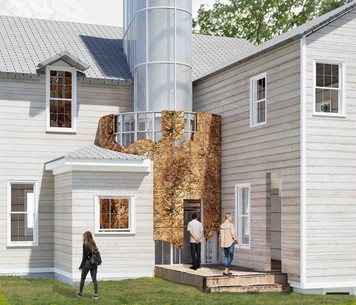THESIS | THE LIVING CONSTRUCTION
- Aanchal Budhrani & Mahek Gidwani
- Nov 30, 2020
- 2 min read
Updated: Dec 11, 2020
Topic : The Living Construction
Thesis by: Aanchal Budhrani & Mahek Gidwani
Institute : Pratt School Of Architecture
Contact : abudhran@pratt.edu / aanchalbudhraniwork@gmail.com
Architecture is what configures a space, not only physically describing its form but internally where it shapes the soul. A space can be a facilitator of emotions and now in the 21st century, the built environment responds.
A living material that has the convenience and ease of being grown in an indoor environment, realizing this benefit we home grew Mycelium as an experiment to test its strength to use it to form panels for gallery and exhibition spaces at the Governor’s Island in New York City. A 100% biodegradable material having the ability to be easily molded into a desirable shape and its strength being comparable to concrete made us think the amount of concrete that could be substituted with it which would eradicate the demolition waste from the construction industry; therefore, we took it forward to form the living wall of a circulation core in a structure.
An unconventional approach moving away from the generic living wall, the mycelium core softened the boundary between the “natural” and the “constructed”, opening up a discourse of dependency of the constructed on the natural and its future possibilities. The material forms the structural core and exaggerates the spacial experience as one moves through the house.
The ‘natural’ living wall is regenerated under ‘man-made’ microclimatic conditions. It also reveals itself externally intriguing and generating curiosity of “what's within?” The helical structural core forms multiple intersections; spatially dividing and connecting the structure at the same time, keeping intact the continuity of the staircase. When the panels have grown completely, they are baked and can be used as construction materials e.g. bricks, panels and insulation. The idea of having a multiple layering system is enhanced by the double helical structure that wraps around the circulation core.
Research statement states, “an ecologically prototypical insertion forming the structural core which constantly grows and encourages changing environments forming a captivating backdrop for the exhibition space within the house and at the same time holds the potential to substitute constructions of the future.”









































Comments